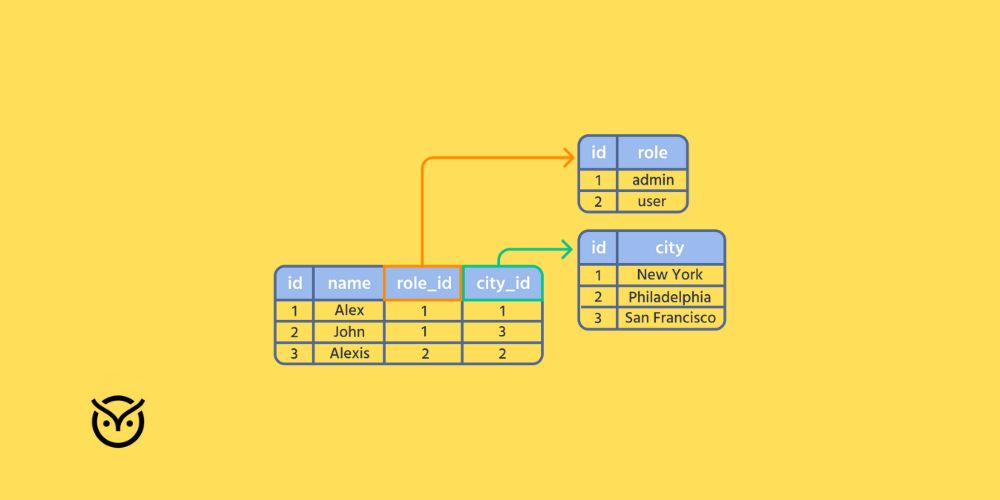
TL;DR
- Keyword filtering skips qualified candidates with different wording.
- Recruitment automation software uses smarter, data-driven matching.
- The ATS market is booming, and automation is the new standard.
- Automated recruiting software improves speed, fairness, and experience.
- Companies using automation cut costs and boost retention.
Somewhere between hundreds of resumes and endless keyword searches lies wasted potential. Recruiters using crude keyword filtering spend hours scanning for exact terms while often overlooking qualified candidates who use different wording. That means top talent gets lost and hiring becomes a slow, frustrating process.
The answer is recruitment automation software. It goes beyond matching exact words. It learns, ranks, and evaluates candidates using data, skill matching, and context. You’ll see how modern top rated recruitment tools and recruitment technology tools solve the core problems of keyword filtering in hiring.
What Is Keyword Filtering in Recruitment?

Keyword filtering is the practice of using predefined words or phrases to sift through resumes, job applications, or candidate profiles. Keywords might be skills (“Java”, “digital marketing”), certifications, experience levels, or names of tools. The system (often an applicant tracking system or ATS) retains or rejects candidates based on whether their resumes contain those keywords.
In most older ATS systems, keyword checks act as the first barrier. Applications are scanned by software before a recruiter ever looks at them. If the expected terms aren’t there, the resume is blocked from moving forward. The process is quick but far too basic.
What Is Keyword Filtering in Recruitment?
The Problems With Keyword Filtering

- Misses quality applicants
Candidates might have the skills, but use different phrasing. For example, “customer support” vs “client relations.” Keyword filters won’t catch synonyms, paraphrases, or context.
- Encourages keyword stuffing
Some applicants overload resumes with buzzwords just to pass filters. This leads to resumes that look good in filters but are weak in actual skills or experience.
- Bias and lack of fairness
If filters focus on certain schools, terms, or certifications, people from different backgrounds or geographies get excluded. Keyword filtering can reinforce past biases.
- Rigid and brittle
Job requirements evolve. If you add or remove a term, many candidates drop out or are incorrectly included. The filter can’t adapt beyond what rules you set.
- Poor candidate experience
When people never hear back because they didn’t have the “right” keyword, even though they were qualified, they feel ignored. That damages the employer brand.
- Time wasted on false positives
Resumes that hit keywords but are actually irrelevant still move forward, meaning human reviewers waste time.
The Problems With Keyword Filtering: Myth or Reality
Why Recruitment Automation Software Is the Future

Smarter matching instead of blunt filters
Modern tools use natural language processing, machine learning, and context-aware parsing. They check skills, experience, tone, and even project relevance, and not just whether a keyword appears. That means fewer false rejects, better candidate fit.
Faster speed, lower cost per hire
When routine tasks such as resume sorting, interview scheduling, and status updates are automated, recruiters gain more time to focus on high-value work. Research suggests the global ATS market will rise, as estimated from USD 17.22 billion in 2025 to USD 30.51 billion by 2032, reflecting the increasing demand for automated hiring tools.
Also, the recruiting automation software market is estimated at USD 549.2 million in 2025 and expected to reach USD 716.8 million by 2035, with a CAGR of 2.7 %.
Optimize Hiring with Recruitment Automation Tools
Recruitment automation tools make hiring smoother and smarter by cutting out repetitive manual work. They manage everything from resume parsing and interview scheduling to candidate tracking in one flow. Instead of juggling spreadsheets or waiting for updates, recruiters see real-time progress, feedback and scores in a single view. These tools not only save time but also improve hiring accuracy by using skill-based filters and contextual data.
The result is faster shortlisting, fewer missed candidates, and consistent hiring quality. Teams using recruitment automation software find they can scale hiring faster without sacrificing personal connection or fairness.
Better candidate experience and fairness
Systems using automated CV screening and context matching treat candidates more fairly. They reduce bias tied to keyword filters. They allow for customizable candidate evaluation software with multilingual support, which means non-native English speakers or international talent get a more level playing field.
More strategic human work
Recruiters spend less time on filtering and more on what matters: interviewing, relationship building, evaluating culture fit. Automation doesn’t replace the human side. It shifts attention.
Flexibility for enterprise needs
Enterprises have many job roles, regions, and languages. The best recruiting process automation tools support enterprise scale: multilingual support, integration with other HR systems, data analytics, dashboards, sourcing + automation in one platform.
What “best tools” look like
The best recruitment automation software comparison should check features like: how deep the matching is, whether it includes automated hiring, automation of recruitment process, whether it helps with top rated recruitment automation tools for candidate management in ATS, and how much you can tailor scoring and workflows.
Keyword Filtering vs. Recruitment Automation

At its core, keyword filtering is like flipping through a dictionary. If a candidate doesn’t have the exact word, they’re ignored. Recruitment automation software, by contrast, looks at meaning, context, and performance indicators.
- Keyword Filtering: Binary. Candidate has the word or not. No middle ground.
- Automation of Recruitment Process: Adaptive. It reads job descriptions, evaluates skills, pulls context, and adjusts over time.
Modern top recruiting software with sourcing and automation doesn’t just screen resumes. It sources passive candidates, engages them with smart outreach, and applies recruitment technology tools to rank them. The result is better hiring funnels, fewer drop-offs, and stronger retention.
How Companies Can Transition to Recruitment Automation via Vettio

Moving from keyword-based ATS to a recruitment automation system doesn’t need to be painful. Platforms like Vettio make the shift easier with tools built for recruiters, not just data scientists.
This is how:
- Start with core automation
Use automated recruiting software for repetitive tasks like resume parsing and interview scheduling. This reduces wasted time.
- Layer in smart evaluation
Add customizable candidate evaluation software with multilingual support to handle diverse regions. That way, an engineer in Riyadh and a marketer in Manila are evaluated fairly.
- Integrate ATS functions
Vettio offers the best automation tools for candidate management in ATS, making sure recruiters can manage pipelines without toggling between multiple systems.
- Expand to full cycle
From automated CV screening to interview scheduling to offer management, companies can adopt automation across the funnel. Some even connect with AI staffing solutions to predict candidate success.
- Don’t forget onboarding
Automation doesn’t stop at hiring. Companies can automate employee onboarding with workflows that cut admin time and improve the new hire experience.
And if you’re wondering which system scales best, look at which recruitment automation software is best for enterprise. Vettio’s design supports both small teams and large-scale enterprise rollouts with reporting, compliance, and integrations that enterprises demand.
Conclusion
Keyword filtering had its moment, but it belongs in the early 2000s. Today’s talent market is too complex, too global, and too competitive to rely on exact-match words. Recruiters need tools that understand context, reduce bias, and deliver speed.
Recruitment automation software is the standard. By adopting automated hiring and recruiting process automation, companies shift from reactive hiring to strategic talent building. The winners will be those who embrace systems that learn, adapt, and support recruiters where they add the most value: people, not paperwork.
FAQs
Keyword filtering in an ATS (Applicant Tracking System) is when resumes are scanned for exact terms like job titles or certifications. If those words aren’t there, the resume might be excluded before a recruiter ever sees it.
It’s outdated because it ignores context and nuance. A candidate might have the right skills but describe them differently. Modern automation tools solve this problem by analyzing meaning not just exact words.
No. AI handles repetitive and administrative parts of hiring, like screening and scheduling. Human recruiters are still critical for relationship-building, assessing culture fit and making final hiring decisions. AI is a partner not a replacement.
They evaluate candidates based on skills, experience and performance data instead of keywords or gut feelings. Automated systems analyze behavior patterns, project outcomes, and compatibility with job requirements, resulting in more accurate shortlists and stronger hires.
Yes. Automated recruiting tools apply standardized criteria to evaluate all candidates equally. They remove bias linked to gender, name, school or geography, focusing purely on skill relevance and data-backed performance indicators.
Yes. Most modern recruitment automation platforms handle messaging and workflows in a flexible way. Candidates still get timely updates that sound natural and personal, while the system quietly takes care of the routine behind the scenes. It keeps the process warm and responsive without adding extra work for recruiters.
Look for smart matching, multilingual support, customizable workflows, ATS (Applicant Tracking System) integration, AI-driven analytics, and compliance tools. The platform should be intuitive for recruiters and adaptable for enterprise use.
They use algorithms that assess multiple data points such as skills, past results, and relevance to job descriptions. AI ranking is based on context, not just keywords, ensuring candidates are compared on measurable criteria.
Most teams notice improvements within the first few hiring cycles. Time-to-hire drops sharply as screening, scheduling, and updates get automated, while overall hiring accuracy rises with consistent data-driven evaluations.
Trusted platforms follow strict compliance standards such as GDPR and local labor laws. They encrypt candidate information, use access controls, and allow only authorized HR staff to handle sensitive data.
Automation minimizes common mistakes like duplicate entries, missed follow-ups, and data mismatches. It keeps records updated in real time, ensuring every step, from resume review to offer stage, stays accurate and consistent.




